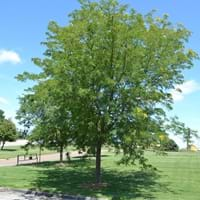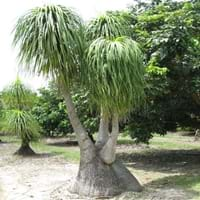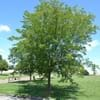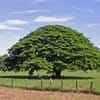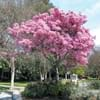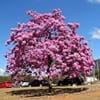Life Span
Annual
Biennial
Origin
Northeastern United States, Southeastern United States, North-Central United States, Central United States, South-Central United States, Canada
Mexico
Types
Tree
Cat palm, Date palm, Old Man palm
Habitat
Hills, Woods
gardens, Grassland
USDA Hardiness Zone
3-9
12-15
Sunset Zone
1a, 1b, 2a, 2b, 3a, 3b, 4, 5, 6, 7, 8, 9, 10, 11, 12, 13, 14, 15, 16, 18, 19, 20
H1, H2, 13, 16, 17, 18, 19, 20, 21, 22, 23, 24
Habit
Upright/Erect
Upright/Erect
Minimum Height
Not Available
Minimum Width
Not Available
Flower Color
Yellow green
Ivory
Flower Color Modifier
Bicolor
Bicolor
Fruit Color
Red, Brown
Not Available
Leaf Color in Spring
Light Green
Green
Leaf Color in Summer
Green, Light Green, Chartreuse, Dark Green, Yellow green
Green
Leaf Color in Fall
Light Yellow
Green
Leaf Color in Winter
Not Available
Green, Dark Green
Leaf Shape
Oblong or Lanceolate
Long hair-like leaves
Plant Season
Summer
Spring, Summer, Fall, Winter
Sunlight
Full Sun
Full Sun
Type of Soil
Loam
Loam, Sand
The pH of Soil
Acidic, Neutral, Alkaline
Neutral
Soil Drainage
Well drained
Well drained
Bloom Time
Late Spring
Spring, Late Spring, Early Summer, Summer, Late Summer, Early Fall, Fall
Where to Plant?
Ground
Ground
How to Plant?
Seedlings
Seedlings
Plant Maintenance
Medium
Medium
Watering Requirements
Medium
Average Water Needs
In Summer
Lots of watering
Lots of watering
In Spring
Moderate
Moderate
In Winter
Average Water
Average Water
Soil pH
Acidic, Neutral, Alkaline
Neutral, Alkaline
Soil Type
Loam
Loam, Sand
Soil Drainage Capacity
Well drained
Well drained
Sun Exposure
Full Sun
Full Sun
Pruning
Remove damaged leaves, Remove dead branches, Remove dead leaves
Remove damaged leaves, Remove dead branches, Remove dead leaves
Fertilizers
All-Purpose Liquid Fertilizer
All-Purpose Liquid Fertilizer
Pests and Diseases
Red blotch
Red blotch
Plant Tolerance
Drought
Drought
Flower Petal Number
Single
Single
Foliage Texture
Fine
Coarse
Foliage Sheen
Matte
Glossy
Attracts
Not Available
Bugs, Butterflies, Hummingbirds, Mites, Spider Mites
Allergy
Not Available
Blurred vision, Diarrhea, Rash, Vomiting
Aesthetic Uses
Landscape Designing, Showy Purposes
Showy Purposes
Beauty Benefits
Not Available
Not Available
Environmental Uses
Air purification
Air purification, Shadow Tree
Medicinal Uses
Antiseptic, cathartic, Cough, Indigestion
Not Available
Part of Plant Used
Leaves, Seeds, Wood
Not Available
Other Uses
Animal Feed, Roasted seed is used as a coffee substitute, Used as Ornamental plant, Used for making wood alcohol, Wood is used in construction
Not Available
Used As Indoor Plant
No
No
Used As Outdoor Plant
Yes
Yes
Garden Design
Feature Plant, Shade Trees, Street Trees
Container, Feature Plant, Foundation, Houseplant, Tropical
Botanical Name
GLEDITSIA triacanthos f. inermis
BEAUCARNEA recurvata
Common Name
Thornless Honeylocust
Bottle Palm, Ponytail Palm
In Hindi
thornless honeylocust
Ponytail Palm
In German
thornless honeylocust
Pferdeschwanz Palm
In French
thornless Honeylocust
Ponytail Palm
In Spanish
honeylocust sin espinas
Cola de caballo de palma
In Greek
thornless honeylocust
αλογοουρά παλάμη
In Portuguese
honeylocust thornless
rabo- de palma
In Polish
thornless honeylocust
kucyk palmowy
In Latin
thornless honeylocust
ponytail palmarum
Phylum
Tracheophyta
Vascular plant
Class
Magnoliopsida
Liliopsida
Order
Fabales
Asparagales
Family
Fabaceae
Liliaceae
Genus
Gleditsia
Beaucarnea
Clade
Angiosperms, Eudicots, Rosids
Angiosperms
Tribe
Not Available
Not Available
Subfamily
Not Available
Nolinoideae
Number of Species
Not Available
Importance of Thornless Honeylocust and Ponytail Palm
Want to have the most appropriate plant for your garden? You might want to know the importance of Thornless Honeylocust and Ponytail Palm. Basically, these two plants vary in many aspects. Compare Thornless Honeylocust and Ponytail Palm as they differ in many characteristics such as their life, care, benefits, facts, etc. Every gardener must at least have the slightest clue about the plants he wants to plant in his garden. Compare their benefits, which differ in many ways like facts and uses. The medicinal use of Thornless Honeylocust is Antiseptic, cathartic, Cough and Indigestion whereas of Ponytail Palm is Not Available. Thornless Honeylocust has beauty benefits as follows: Not Available while Ponytail Palm has beauty benefits as follows: Not Available.
Compare Facts of Thornless Honeylocust vs Ponytail Palm
How to choose the best garden plant for your garden depending upon its facts? Here garden plant comparison will help you to solve this query. Compare the facts of Thornless Honeylocust vs Ponytail Palm and know which one to choose. As garden plants have benefits and other uses, allergy is also a major drawback of plants for some people. Allergic reactions of Thornless Honeylocust are Not Available whereas of Ponytail Palm have Blurred vision, Diarrhea, Rash and Vomiting respectively. Having a fruit bearing plant in your garden can be a plus point of your garden. Thornless Honeylocust has no showy fruits and Ponytail Palm has no showy fruits. Also Thornless Honeylocust is not flowering and Ponytail Palm is not flowering . You can compare Thornless Honeylocust and Ponytail Palm facts and facts of other plants too.
